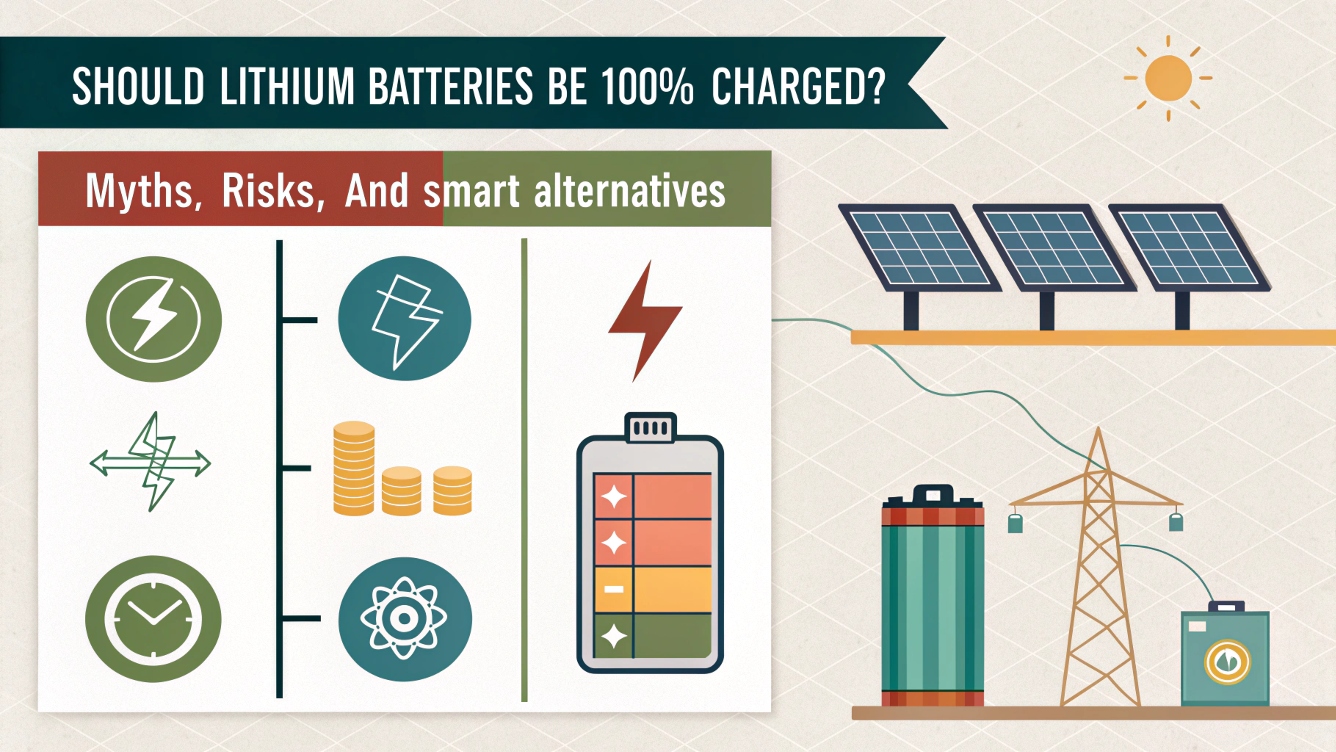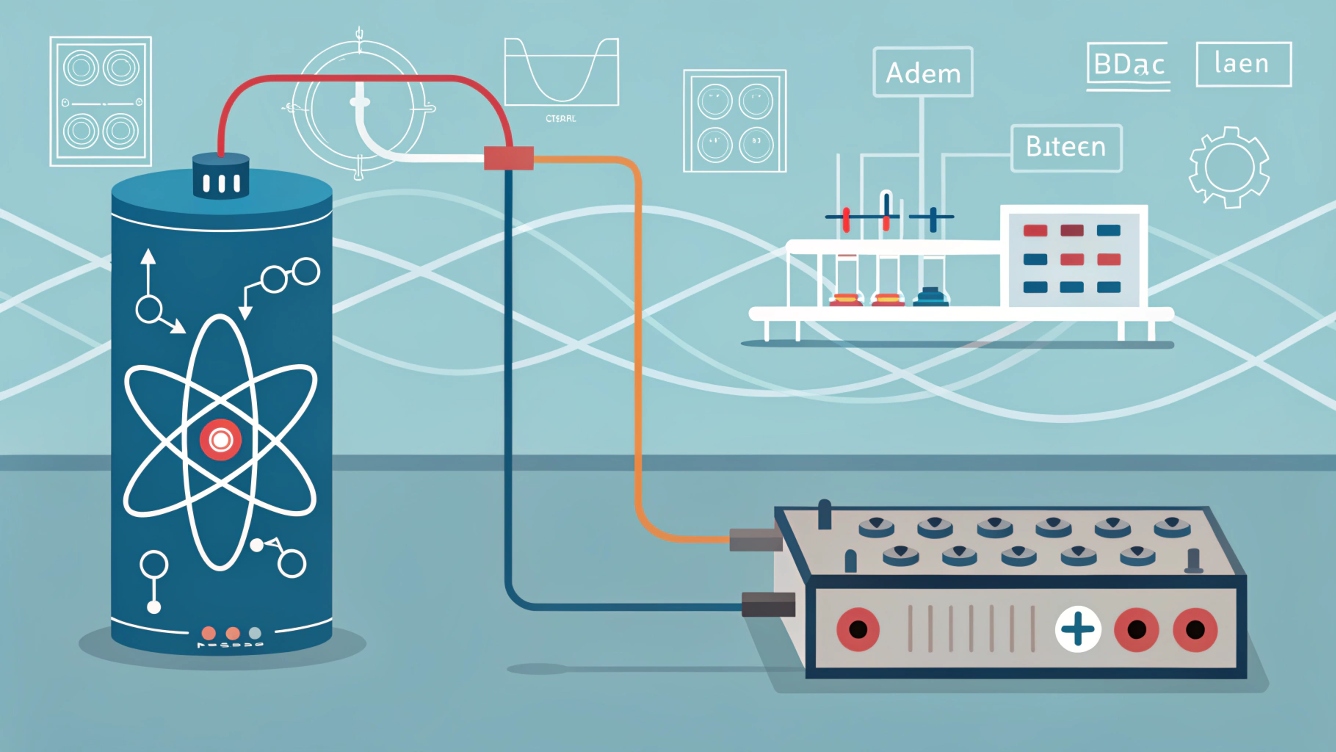Se le batterie al litio dovessero essere 100% Carico? Myths, Risks, and Smart Alternatives
The Science Behind Lithium Battery Charging: Perché 100% Isn’t Ideal
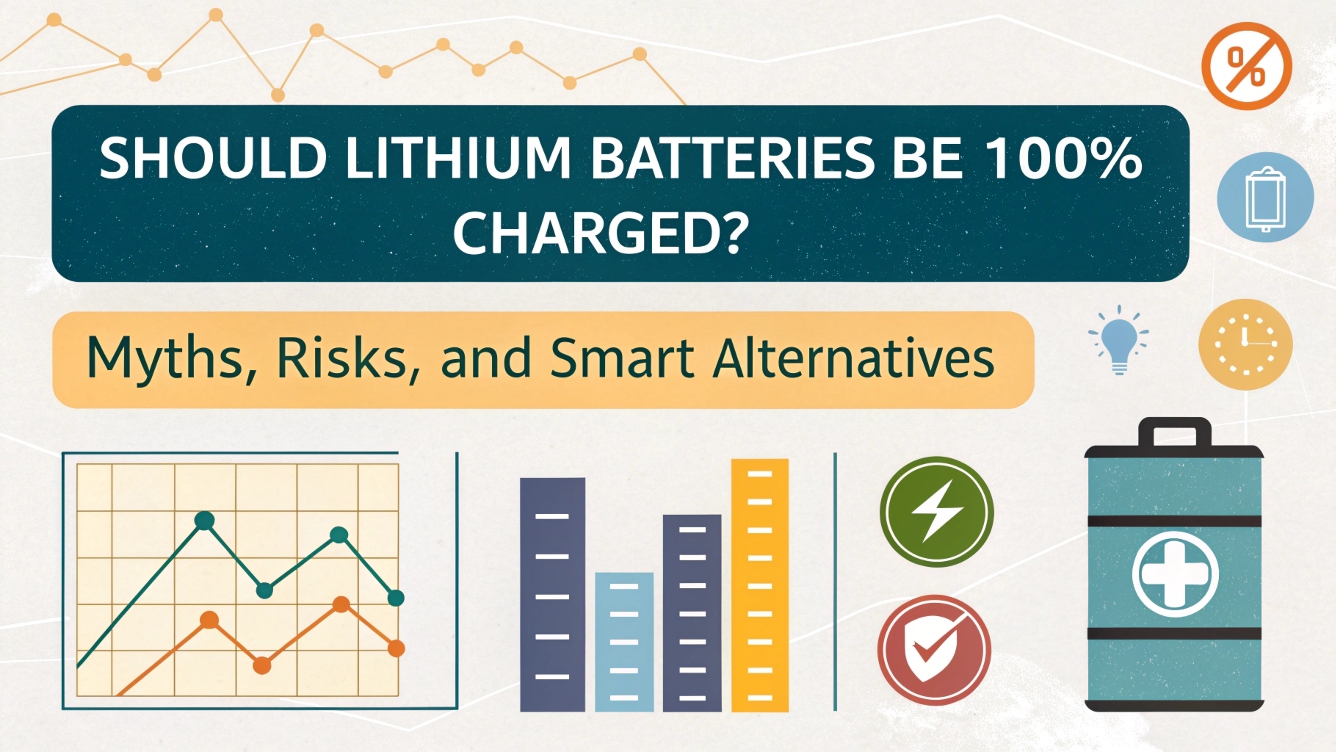
Lithium batteries power everything from smartphones to solar storage systems, but charging them to 100% is like forcing a marathon runner to sprint endlessly—it wears them out faster. Ecco perché:
- Chemical Stress: At full charge, lithium-ion cells operate at high voltage (4.2V/cell), accelerating electrolyte degradation and lithium plating. Studies show this can reduce lifespan by up to 20% compared to partial charging:citare[8]:citare[9].
- Thermal Runaway Risk: Overcharging generates excess heat, increasing fire hazards. Per esempio, a 12V lithium battery charged beyond its limit can reach temperatures exceeding 1,500°F during thermal runaway:citare[10].
- Capacity Loss: Frequent full charges degrade capacity 2-3x faster than maintaining a 20-80% charge range:citare[9].
Per la punta: Pair your system with batterie al litio impilabili to distribute load and reduce individual cell stress.
Quando 100% Charging Makes Sense: Exceptions to the Rule
1. Phosphate Iron (LiFePO4) Batterie
Tesla recommends weekly 100% charges for LiFePO4 packs to recalibrate voltage sensors, as their flat discharge curve makes state-of-charge estimation tricky:citare[6].
2. Archiviazione a lungo termine
Storing lithium batteries at 50% charge minimizes aging. Tuttavia, if unused for months, a full charge prevents deep discharge damage:citare[5]:citare[7].
3. Emergency Preparedness
For off-grid solar systems, occasional full charges ensure backup power readiness. Utilizzo solar charge controllers.
Optimizing Lithium Battery Lifespan: 5 Strategie comprovate
1. Carica parziale (20-80% Regola)
Keeping batteries between 20% E 80% charge reduces stress. For a 10kWh Batteria di litio impilabile sistema, Questo significa:
- Daily Use: Charge to 80% (8KWH utilizzabile).
- Long Trips: Temporarily charge to 100% for extra capacity:citare[8]:citare[9].
2. Controllo della temperatura
- Ideal Range: Charge at 59°F–77°F (15°C–25°C).
- Avoid Extremes: Charging below 32°F (0°C) causes lithium plating; above 113°F (45°C) accelerates degradation:citare[8]:citare[10].
3. Smart Charging Tech
Use adaptive chargers that stop at 80% by default. Per esempio, Apple’s Optimized Battery Charging learns user habits to delay full charges:citare[3].
4. Evita scariche profonde
Never drain lithium batteries below 20%. A 100Ah battery should be recharged once it hits 20Ah remaining to prevent irreversible damage:citare[5]:citare[7].
5. Modular Systems for Scalability
Instead of straining a single battery, batterie al litio impilabili allow users to:
- Add capacity as needed (PER ESEMPIO., start with 5kWh, expand to 20kWh).
- Isolate faulty modules without shutting down the entire system:citare[9].
Argomento di studio: Solar Homes with Batterie al litio impilabili
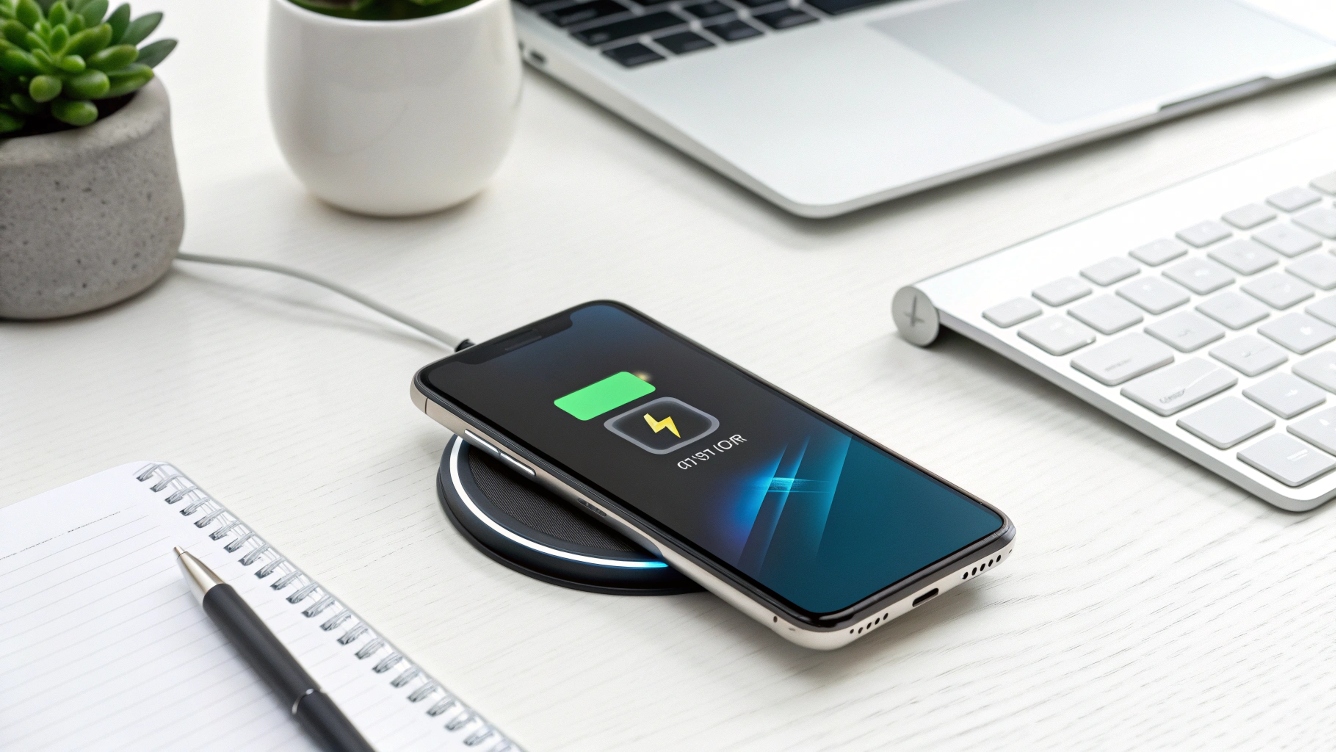
A family in Arizona using our Off-Grid Solar Kit achieved:
- 30% Durata più lunga: By charging batteries to 80% daily via MPPT controllers.
- Fire Safety: Storing modules in fireproof cabinets with temperature sensors:citare[10].
- Risparmio sui costi: Replacing individual modules instead of entire systems.
Charging Best Practices by Application
| Applicazione | Recommended Charge Limit | Note |
|---|---|---|
| Smartphone | 80% | Use built-in "optimized charging" Modalità:citare[3]. |
| Veicoli elettrici | 90% (Ioni di litio), 100% (LiFePO4) | Tesla’s LiFePO4 packs need weekly full charges:citare[6]. |
| Archiviazione solare | 85% | Pair with stackable systems for load balancing:citare[9]. |
| Utensili elettrici | 75% | Avoid deep discharges during heavy use:citare[7]. |
Future-Proofing with Sistemi di batterie modulari
Upgrading to batterie al litio impilabili offers:
- Flessibilità: Mix old and new modules (PER ESEMPIO., add 5kWh to an existing 10kWh setup).
- Efficienza: Balance charge/discharge rates across modules to reduce wear.
- Sicurezza: Isolate overheating cells automatically via smart BMS:citare[9]:citare[10].
Per la punta: Combine with AI-driven energy management software to predict usage patterns and optimize charging cycles.
Domande frequenti: Answering Your Top Concerns
Q: Can I charge my battery to 100% occasionally?
UN: sì! Occasional full charges (PER ESEMPIO., monthly) help recalibrate battery meters without significant harm:citare[6]:citare[9].
Q: Come monitorare la salute della batteria?
UN: Use Bluetooth-enabled battery monitors (included in our Pro Series per tenere traccia della tensione, temperatura, and cycle counts.
Q: Qual è la durata della vita di una batteria al litio?
UN: Typically 2,000–5,000 cycles at 80% Dipartimento della Difesa. Proper care can extend this by 30%:citare[8]:citare[9].
Conclusione: Smarter Charging, Durata più lunga
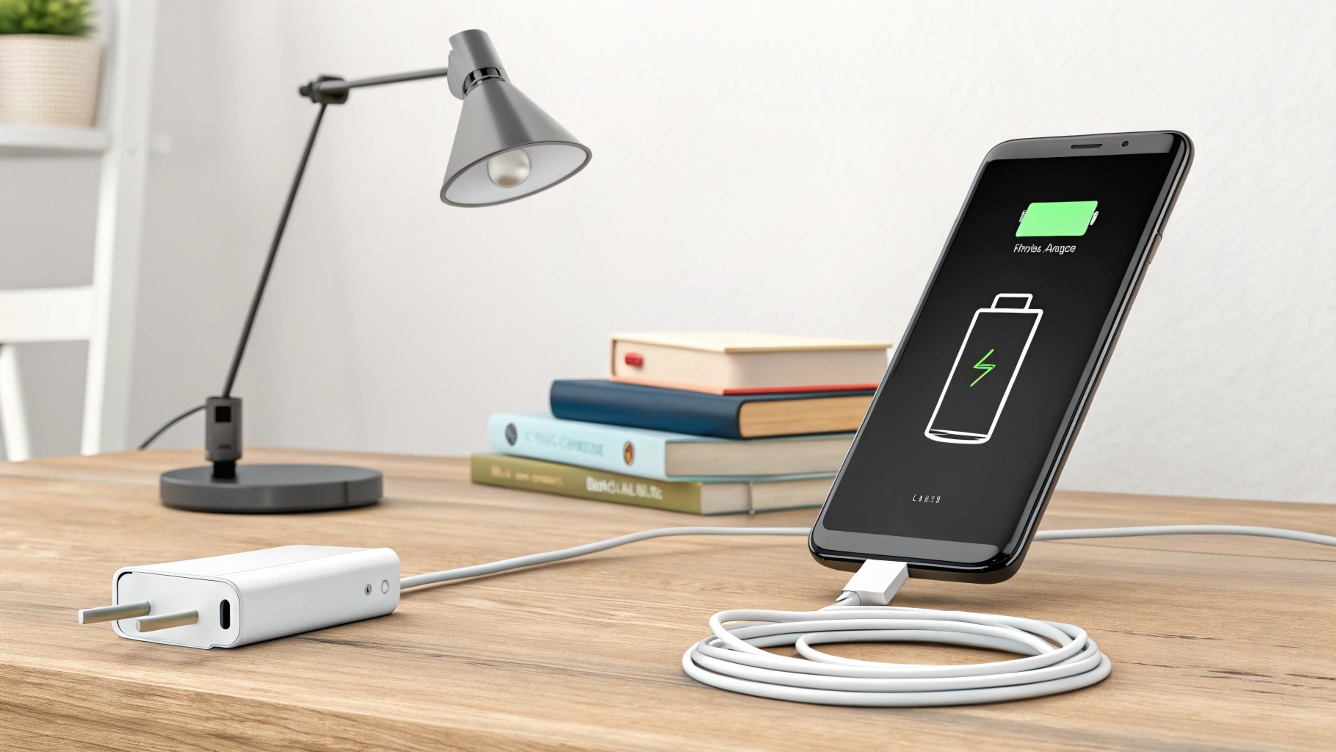
While lithium batteries Potere be charged to 100%, doing so regularly is like revving a car engine nonstop—it works but wears parts faster. For solar enthusiasts and off-grid users, batterie al litio impilabili provide a scalable, stress-free solution.
Passi successivi:
- Explore our Modular Battery Kits for customizable storage.
- Scarica il nostro Solar Charging Guide Per suggerimenti fai -da -te.
- Watch a Demo on optimizing charge cycles.
Gycxsolar fornisce prodotti a batteria al litio di alta qualità e tutti i componenti dei sistemi di energia solare ai clienti in tutto il mondo.
Vengono prodotti prodotti di alta qualità come pannelli solari e inverter. Ti consigliamo anche soluzioni di combinazione di sistemi più favorevoli a te.
Allo stesso tempo, Abbiamo esperti che forniscono servizi di soluzioni di progettazione gratuite.
Un servizio di stop per risolvere i tuoi problemi, Il servizio di alta qualità mette gycxsolar in una posizione di leader nel settore.
La tua consultazione è molto gradita. Lo schema di progettazione è sempre stato altamente elogiato e fidato, con una base di clienti molto stabile.
Riferimenti
- Lithium battery chemistry: Wikipedia: Batteria agli ioni di litio.
- Thermal runaway risks: Wikipedia: Lithium battery fire.
- Cycle life data: Studi peer-reviewed in Journal of Power Sources.

